Tree Lopping and Removal in Hedge Trimming

Maintaining a healthy and aesthetically pleasing garden often involves various maintenance tasks, including tree lopping and removal. These services are crucial, especially when dealing with overgrown hedges that can obstruct views, hinder sunlight, and even pose safety risks. In this comprehensive guide, we delve into the intricacies of tree lopping and removal in hedge trimming, providing you with valuable insights to keep your outdoor space in pristine condition.
Tree lopping refers to the selective removal of branches or sections of a tree, primarily to manage its shape, health, or to prevent potential hazards. On the other hand, tree removal involves the complete extraction of a tree from its location, which is often necessary when a tree is diseased, dead, or poses significant risks to the surrounding environment.
Hedge trimming plays a pivotal role in enhancing the overall appeal of a garden. However, when hedges grow excessively, they can become unmanageable, leading to the need for professional tree lopping and removal services. Understanding the balance between trimming and removal is essential for maintaining a harmonious and safe outdoor space.
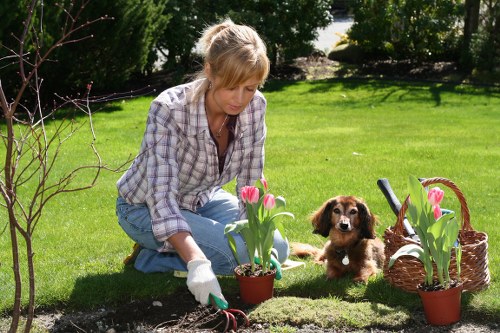
Understanding Tree Lopping
Tree lopping, also known as crown reduction, involves cutting back the branches of a tree to reduce its size while preserving its overall structure. This practice is essential for several reasons:
- Safety: Overgrown branches can become hazards, especially during storms or high winds.
- Health: Removing dead or diseased branches prevents the spread of infections to other parts of the tree.
- Aesthetics: Proper lopping ensures that the tree complements the landscape, enhancing the garden's beauty.
When performed correctly, tree lopping can significantly improve the lifespan and vitality of a tree. However, improper lopping can lead to structural weaknesses and increased susceptibility to diseases.
It's crucial to hire experienced professionals who understand the nuances of tree anatomy and growth patterns to ensure that lopping is done responsibly and effectively.
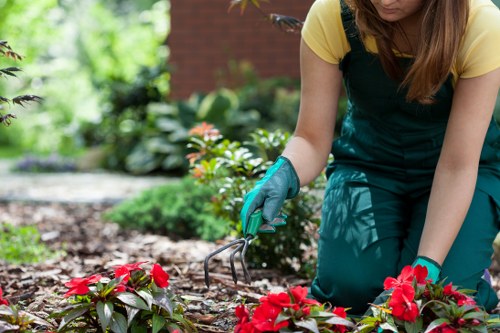
Tree Removal in Hedge Trimming
There are instances when tree lopping isn't sufficient, and complete removal is necessary. Situations requiring tree removal include:
- Advanced Decay or Disease: Trees affected by significant decay or diseases like oak wilt or Dutch elm disease often cannot be saved.
- Structural Damage: Trees with compromised structural integrity pose severe risks, especially in urban areas.
- Space Constraints: In cases where the tree interferes with buildings, power lines, or other infrastructure, removal becomes essential.
Tree removal is a complex and potentially dangerous task that should only be carried out by certified arborists or professional tree removal services. Proper equipment and expertise are vital to ensure safety and prevent damage to the property.
After removal, it's equally important to address the stump to prevent regrowth and maintain the garden's appearance. Stump grinding or complete extraction are common methods employed by professionals.
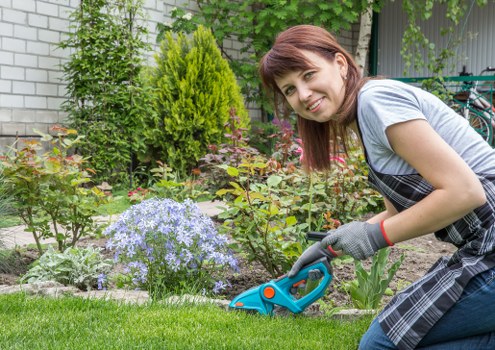
Benefits of Professional Tree Lopping and Removal
Engaging professional services for tree lopping and removal offers numerous advantages:
- Expertise: Professionals possess the knowledge and skills to assess the tree's health and determine the best course of action.
- Safety: Proper handling of tools and equipment minimizes the risk of accidents during the process.
- Efficiency: Experienced teams can complete the job promptly, minimizing disruption to your daily life.
- Proper Disposal: Professionals ensure that the removed tree parts are disposed of responsibly, adhering to environmental regulations.
Moreover, professional services can provide valuable advice on maintaining tree health, preventing future issues, and enhancing the overall landscape.
Investing in professional tree lopping and removal not only safeguards your property but also contributes to a healthier and more beautiful environment.

Choosing the Right Service Provider
Selecting a reputable tree lopping and removal service is crucial for achieving the desired results. Here are key factors to consider:
- Certification and Licensing: Ensure that the service provider is certified and holds the necessary licenses to operate in your area.
- Experience: Look for companies with a proven track record and extensive experience in tree care.
- Insurance: Verify that the company is insured to protect against potential damages or accidents during the job.
- Customer Reviews: Check testimonials and reviews to gauge the quality of their services and customer satisfaction.
- Comprehensive Services: Opt for providers who offer a range of services, including lopping, removal, stump grinding, and cleanup.
Additionally, obtaining multiple quotes can help you make an informed decision based on budget and service offerings.
Don't hesitate to ask questions about their processes, equipment, and safety measures to ensure that you are entrusting your property to capable hands.
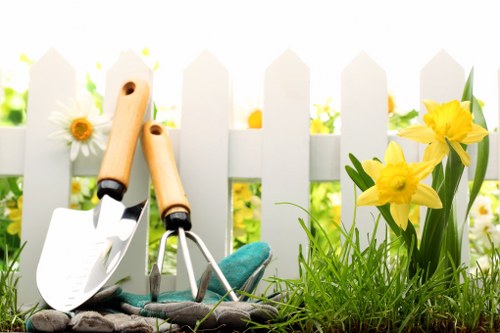
Steps Involved in Tree Lopping and Removal
Assessment and Planning
The first step involves a thorough assessment of the tree's condition, including its health, structural integrity, and the extent of overgrowth. Professionals evaluate potential hazards and plan the best approach for lopping or removal.
Execution
Using specialized tools and techniques, the team proceeds with lopping or removal. Safety protocols are strictly followed to protect both the workers and the property.
Cleanup and Disposal
After the tree has been lopped or removed, the area is cleaned up. Debris is collected and disposed of properly, ensuring that your garden is left tidy and free from hazards.
Post-Removal Care
In cases of removal, additional steps like stump grinding and soil treatment may be necessary to prevent regrowth and prepare the area for future landscaping.
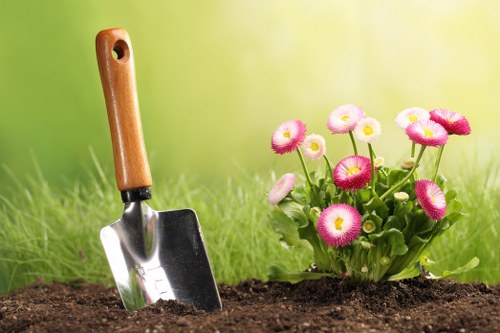
Maintaining Healthy Hedges
Regular maintenance is key to preventing the need for extensive tree lopping or removal. Here are some tips for maintaining healthy hedges:
- Regular Trimming: Schedule regular trimming sessions to keep the hedge at the desired shape and size.
- Pest Control: Monitor for pests and diseases, addressing issues promptly to prevent spread.
- Proper Watering: Ensure that hedges receive adequate water, especially during dry periods.
- Fertilization: Use appropriate fertilizers to provide essential nutrients for growth.
- Inspection: Periodically inspect the hedge for any signs of stress or damage.
By incorporating these practices, you can maintain lush and vibrant hedges, reducing the need for significant lopping or removal interventions.
Proactive care not only enhances the beauty of your garden but also ensures the longevity and health of your plants.
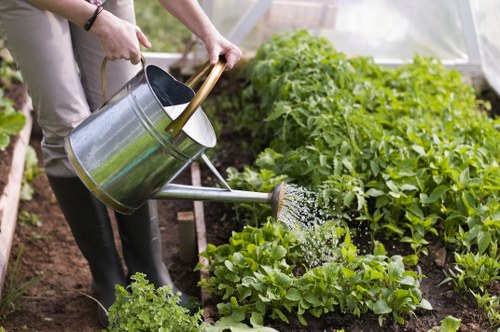
Environmental Considerations
Tree lopping and removal have environmental implications that must be thoughtfully considered. Responsible practices ensure minimal impact on the ecosystem:
- Preserving Biodiversity: Avoid removing trees that serve as habitats for local wildlife.
- Sustainable Disposal: Utilize eco-friendly methods for disposing of wood and debris, such as recycling or composting.
- Regulatory Compliance: Adhere to local regulations and obtain necessary permits before undertaking removal projects.
- Replanting: Consider planting replacement trees to maintain the ecological balance and contribute to the environment.
Embracing sustainable practices not only benefits the environment but also aligns with broader ecological responsibilities.
It's essential to collaborate with service providers who prioritize environmental stewardship in their operations.

Cost Factors in Tree Lopping and Removal
The cost of tree lopping and removal can vary based on several factors:
- Tree Size and Type: Larger trees or those with complex structures may require more resources and time.
- Accessibility: Trees located in hard-to-reach areas or near structures may increase the complexity of the job.
- Health of the Tree: Diseased or dead trees might require additional care or protective measures.
- Local Regulations: Compliance with local laws and obtaining permits can influence the overall cost.
- Additional Services: Services like stump grinding, debris removal, and site cleanup may be billed separately.
Obtaining detailed quotes from multiple providers can help you understand the cost breakdown and select services that fit your budget.
Remember that investing in quality services can save you from potential future expenses related to tree-related damages or health issues.

Safety Precautions
Tree lopping and removal are inherently risky tasks that require stringent safety measures:
- Protective Gear: Workers should wear appropriate safety equipment, including helmets, gloves, and eye protection.
- Proper Training: Professionals must be trained in the correct use of tools and machinery.
- Site Assessment: Evaluating the surrounding area for potential hazards like power lines or nearby structures.
- Emergency Preparedness: Having protocols in place to handle accidents or unexpected challenges.
Ensuring safety not only protects the workers but also prevents accidental damage to your property.
Always choose service providers who prioritize safety in their operations.
Legal and Regulatory Aspects
Tree lopping and removal are subject to various legal regulations aimed at protecting the environment and ensuring public safety:
- Permits and Approvals: Many localities require permits before undertaking tree removal, especially for protected or significant trees.
- Protected Species: Certain tree species may be protected by law, prohibiting their removal without explicit permission.
- Environmental Impact Assessments: For large-scale removals, assessing the environmental impact may be necessary.
- Zoning Laws: Regulations regarding property boundaries and tree placement must be adhered to.
Non-compliance with these regulations can result in fines, legal action, or the need to restore removed trees.
It's imperative to consult with local authorities and ensure that all legal requirements are met before proceeding with tree lopping or removal.
Technological Advancements in Tree Care
Advancements in technology have revolutionized tree lopping and removal practices:
- Advanced Equipment: Modern machinery allows for more efficient and safer tree removal.
- Drones: Used for aerial assessments, drones provide detailed insights without the need for manual inspection.
- Software Tools: Planning and executing tree care strategies have become more precise with the help of specialized software.
- Eco-friendly Solutions: Innovations focus on minimizing environmental impact through sustainable methods.
Staying abreast of these technological trends enables service providers to offer superior and more sustainable tree care solutions.
Embracing technology not only enhances efficiency but also improves the quality and safety of tree lopping and removal services.
Common Myths About Tree Lopping and Removal
Misconceptions can often deter property owners from seeking necessary tree care services. Here are some common myths debunked:
- Myth 1: Tree lopping weakens the tree.
- Fact: When done correctly by professionals, lopping can enhance the tree's health by removing diseased or dead branches.
- Myth 2: Tree removal is always destructive.
- Fact: Sometimes removal is essential for safety and can be followed by replanting to maintain ecological balance.
- Myth 3: DIY tree removal is cost-effective.
- Fact: DIY attempts can lead to accidents, property damage, and higher long-term costs compared to professional services.
Understanding the realities of tree care helps in making informed decisions that benefit both the property owner and the environment.
Consulting with experts can provide clarity and dispel any lingering doubts or fears about tree lopping and removal.
Preparing for Tree Lopping or Removal
Proper preparation ensures a smooth and efficient process:
- Clear the Area: Remove any obstacles or items near the tree to provide easy access for the workers.
- Inform Neighbors: Notify nearby residents to prevent any inconvenience or misunderstandings during the operation.
- Secure Pets: Ensure that pets are kept away from the work area for their safety.
- Discuss Expectations: Communicate your requirements and concerns with the service provider beforehand.
Being well-prepared minimizes potential disruptions and facilitates effective communication between you and the professionals.
Clear communication ensures that the final outcome aligns with your expectations and needs.
Post-Service Follow-Up
After tree lopping or removal, follow-up activities are essential for maintaining the health of your garden:
- Inspect the Area: Check for any remaining debris or signs of damage that need attention.
- Monitor Tree Health: Keep an eye on nearby trees to ensure they remain healthy and free from the spread of disease.
- Plan for Replanting: If a tree was removed, consider planting a new one to replace it and support local biodiversity.
- Seek Feedback: Provide feedback to the service provider to help them improve and assist future customers.
Maintaining open communication with your service provider can also address any post-service concerns effectively.
Ensuring the ongoing health and beauty of your garden is a continuous process that extends beyond the initial tree lopping or removal.
Conclusion
Tree lopping and removal are vital aspects of hedge trimming and overall garden maintenance. By understanding the processes, benefits, and considerations involved, you can make informed decisions that enhance the safety, health, and beauty of your outdoor space.
Engaging professional services ensures that these tasks are carried out efficiently and responsibly, safeguarding both your property and the environment.
Contact us today to schedule a consultation and take the first step towards a well-maintained and beautiful garden.
Book your service now and experience the difference that expert tree care can make.